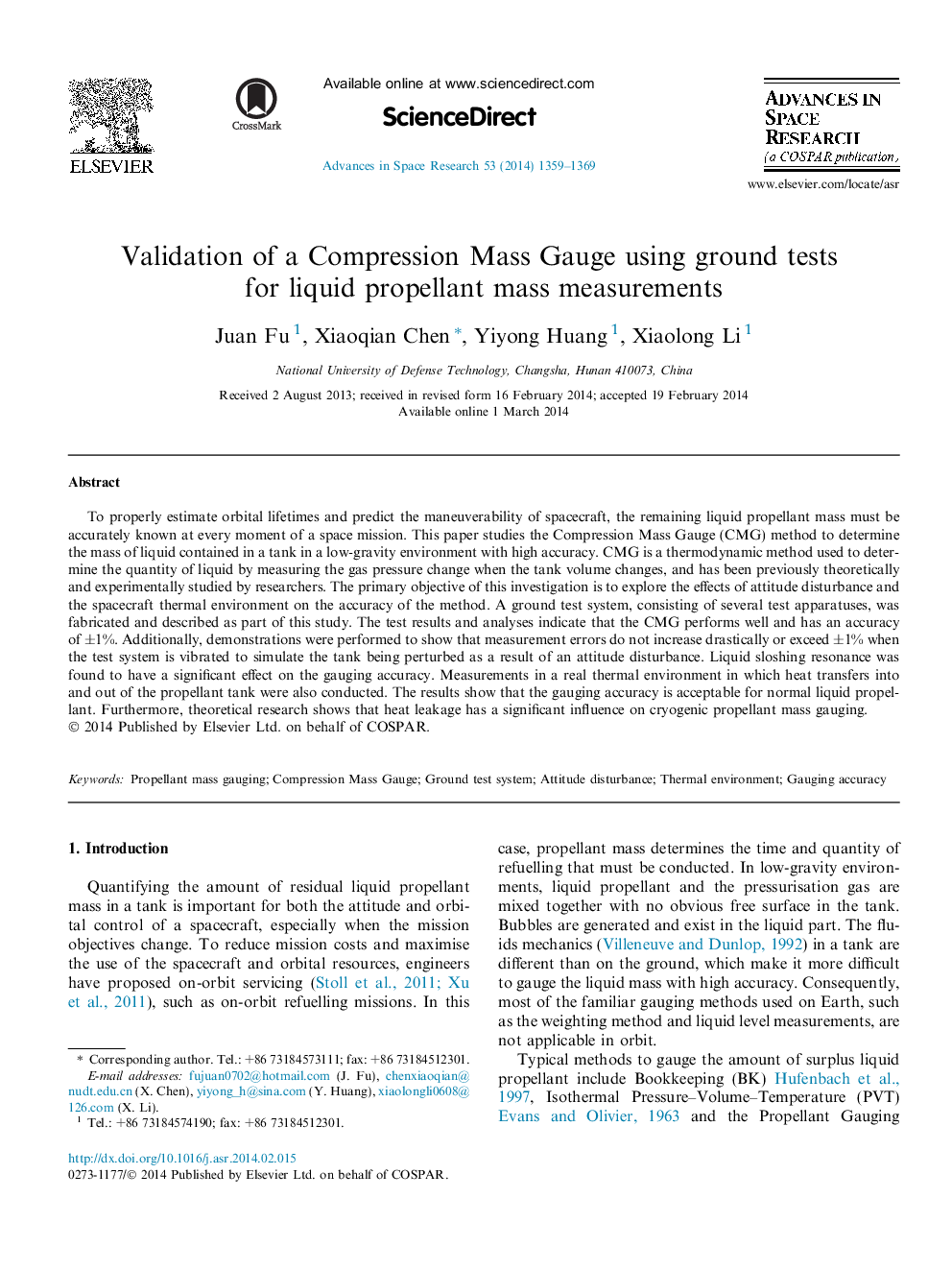| Article ID | Journal | Published Year | Pages | File Type |
|---|---|---|---|---|
| 1764251 | Advances in Space Research | 2014 | 11 Pages |
•Gauging accuracy of ±1% has been achieved in different fill levels.•Fine measurement accuracy has been demonstrated at various compression frequencies.•Gauging accuracy gets worse when a tank is vibrated in natural frequency of liquid.•Heating or cooling the tank system has influence on the measurement accuracy.•Thermodynamic parameter should be modified for cryogenic liquid gauging.
To properly estimate orbital lifetimes and predict the maneuverability of spacecraft, the remaining liquid propellant mass must be accurately known at every moment of a space mission. This paper studies the Compression Mass Gauge (CMG) method to determine the mass of liquid contained in a tank in a low-gravity environment with high accuracy. CMG is a thermodynamic method used to determine the quantity of liquid by measuring the gas pressure change when the tank volume changes, and has been previously theoretically and experimentally studied by researchers. The primary objective of this investigation is to explore the effects of attitude disturbance and the spacecraft thermal environment on the accuracy of the method. A ground test system, consisting of several test apparatuses, was fabricated and described as part of this study. The test results and analyses indicate that the CMG performs well and has an accuracy of ±1%. Additionally, demonstrations were performed to show that measurement errors do not increase drastically or exceed ±1% when the test system is vibrated to simulate the tank being perturbed as a result of an attitude disturbance. Liquid sloshing resonance was found to have a significant effect on the gauging accuracy. Measurements in a real thermal environment in which heat transfers into and out of the propellant tank were also conducted. The results show that the gauging accuracy is acceptable for normal liquid propellant. Furthermore, theoretical research shows that heat leakage has a significant influence on cryogenic propellant mass gauging.
